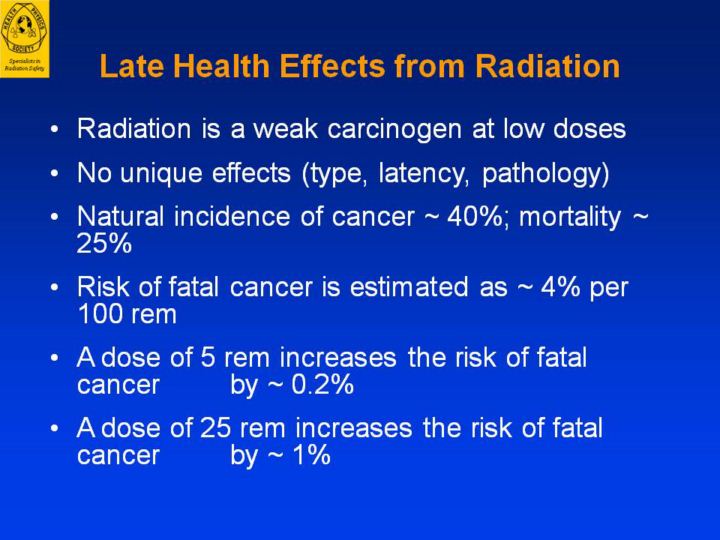| front |1 |2 |3 |4 |5 |6 |7 |8 |9 |10 |11 |12 |13 |14 |15 |16 |17 |18 |19 |20 |21 |22 |23 |24 |25 |26 |27 |28 |29 |30 |31 |32 |33 |34 |35 |36 |37 |38 |39 |40 |41 |42 |43 |44 |45 |46 |47 |48 |review |
 |
Chronic Health Effects from Radiation
•High
radiation doses have been linked to a modest increase in the incidence
of cancer in exposed populations, such as the atomic bomb survivors. At
low doses, below about 20 rem, the potential for cancer causation is
uncertain and generally believed to be quite small.
•The
natural incidence of cancer in the population of the United States, over
a lifetime, is estimated to be approximately 40% and the risk of
mortality is approximately 25%. [Reference - SEER (Surveillance,
Epidemiology and End Results) Program of the National Cancer Institute]
•Risk
of fatal cancer from ICRP Publication 60.
•There
are several sets of recommendations for acceptable doses to emergency
workers performing life saving actions. While these doses
are 5 to 10 times higher than annual occupational dose limits, it
represents a modest increase in cancer risk during life saving measures.
EPA / NRC 25 rem NCRP / ICRP Approach or exceed 50 rem
•
(EPA, Manual of Protective Action Guides and Protective Actions for Nuclear Incidents, 1992) (NCRP Report 116, Limitation on Exposure to Ionizing Radiation, 1993) (IRCP Report 60, 1990 Recommendations of the International Commission on Radiological Protection, 1991) |